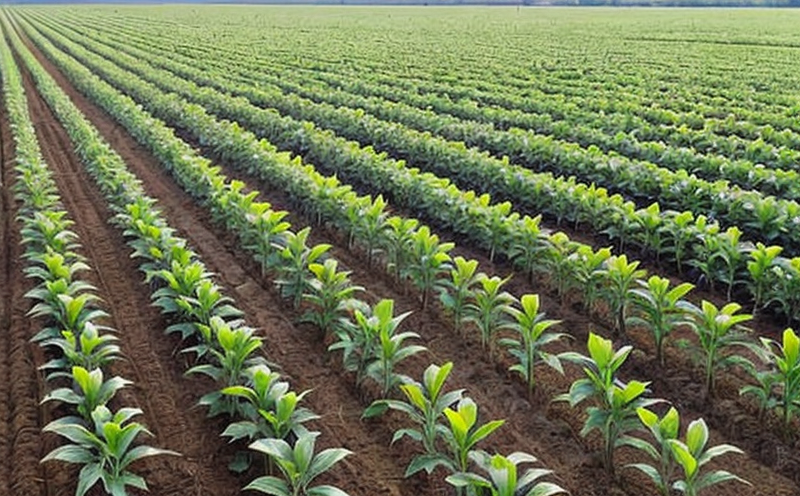ISO 18787 Mycotoxin Testing in Imported Agricultural Commodities
The ISO 18787 standard provides a robust framework to detect and quantify mycotoxins, which are toxic secondary metabolites produced by fungi. These toxins can pose significant risks to human health when present in agricultural commodities such as grains, oilseeds, pulses, and spices during importation.
The importance of ISO 18787 lies in ensuring food safety and compliance with international trade regulations. Mycotoxins like aflatoxin B1, zearalenone, and T-2 toxin are known to cause various health issues including carcinogenesis, immunosuppression, and reproductive disorders.
The testing procedure outlined by ISO 18787 involves multiple steps designed to ensure accurate detection. Initially, the agricultural commodity is prepared for analysis following standard methods such as sieving or grinding. Once processed, samples are extracted using solvents like acetonitrile or methanol. The extracts undergo cleanup procedures followed by purification through solid-phase extraction cartridges.
High-performance liquid chromatography (HPLC) coupled with fluorescence detection remains the primary analytical technique used to identify and quantify mycotoxins according to ISO 18787. This method offers high sensitivity, selectivity, and repeatability essential for precise analysis of complex matrices like those found in imported agricultural products.
Compliance with this standard ensures that imported agricultural commodities meet stringent regulatory requirements set by importing countries' food safety authorities. For instance, the European Union mandates strict limits on certain mycotoxins permissible in various foodstuffs. By adhering to ISO 18787, importers can avoid potential seizures, recalls, and legal penalties associated with non-compliance.
Moreover, implementing this testing protocol promotes transparency and trust within the supply chain, enhancing consumer confidence regarding product safety. It supports global trade facilitation by ensuring that all parties involved in international agricultural commerce operate under consistent standards.
Scope and Methodology
- Sampling: Samples are collected from various points along the supply chain, including origin, transit, and destination ports.
- Sample Preparation: Grind or sieve samples to ensure homogeneity before extraction.
- Extraction: Utilize appropriate solvents such as acetonitrile for efficient extraction of mycotoxins.
- Cleanup and Purification: Employ solid-phase extraction cartridges to remove unwanted components.
- Analytical Technique: High-performance liquid chromatography (HPLC) with fluorescence detection is employed for accurate quantification.
The methodology outlined in ISO 18787 ensures consistency and reliability across different laboratories performing these tests. This standardization minimizes variability, allowing for reproducible results that can be compared internationally.
Benefits
Implementing ISO 18787 mycotoxin testing offers numerous advantages:
- Promotes Food Safety: Ensures imported agricultural commodities comply with stringent safety regulations, protecting public health.
- Facilitates Compliance: Helps importers meet regulatory requirements set by importing countries' food safety authorities.
- Enhances Transparency: Provides a clear and consistent approach to testing, fostering trust within the supply chain.
- Supports Trade Facilitation: Reduces risks of seizures, recalls, and legal penalties associated with non-compliance.
In addition to these benefits, organizations that adopt ISO 18787 benefit from enhanced reputation among consumers and stakeholders. This can translate into increased market share and competitive advantage in the global agricultural commodities sector.
Quality and Reliability Assurance
The reliability and accuracy of ISO 18787 testing are paramount for ensuring food safety and compliance. Quality assurance measures include:
- Laboratory Accreditation: Laboratories must be accredited under standards like ISO/IEC 17025 to ensure they meet international quality requirements.
- Training: Personnel handling samples undergo rigorous training programs focusing on best practices and latest methodologies.
- Certification of Equipment: All laboratory equipment is regularly calibrated against internationally recognized standards.
- Quality Control Samples: Regular use of certified reference materials helps maintain consistency in test results.
By adhering to these practices, laboratories can provide reliable and accurate mycotoxin testing services that contribute significantly to global food safety initiatives.





